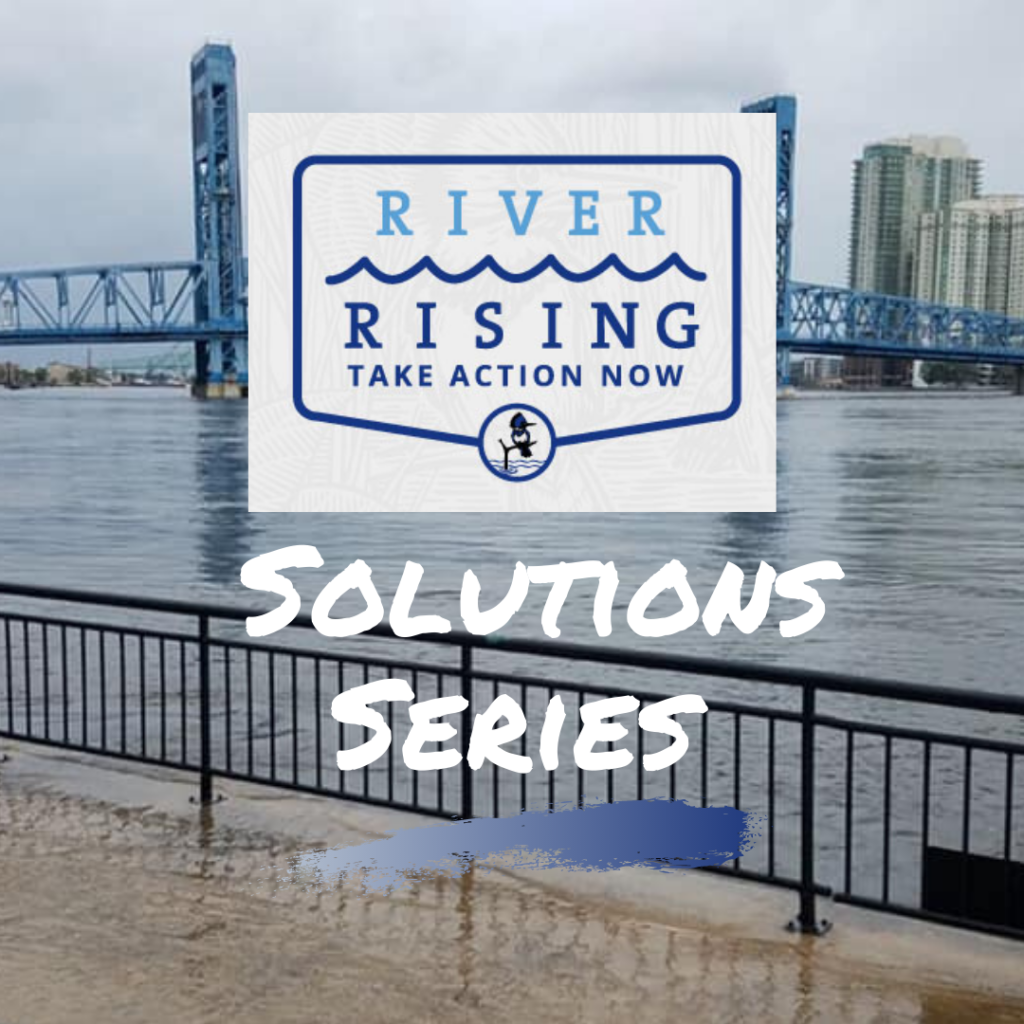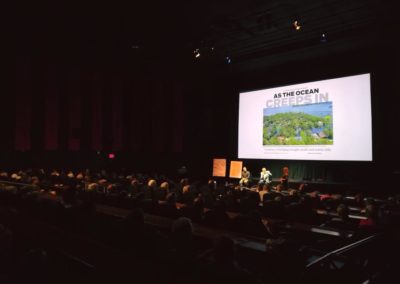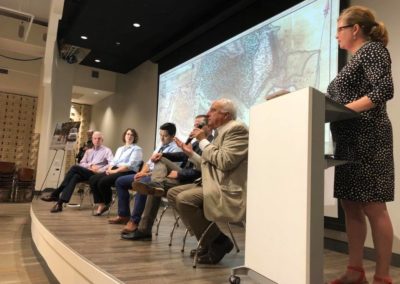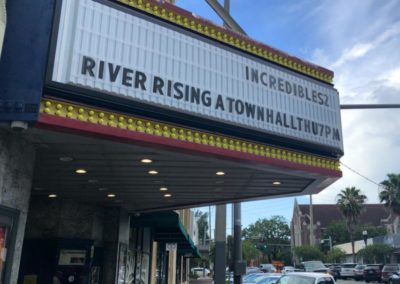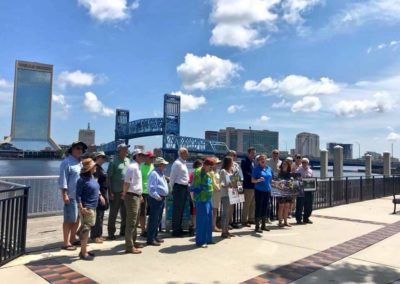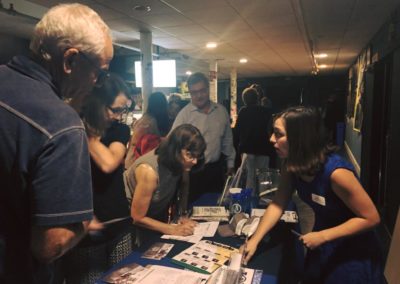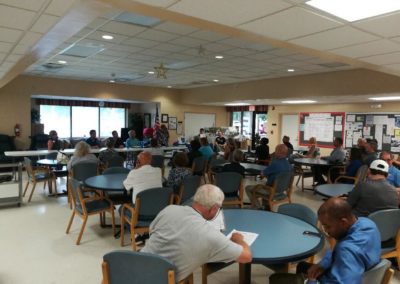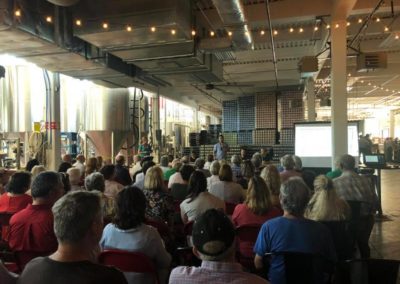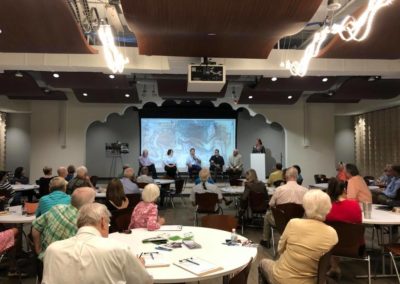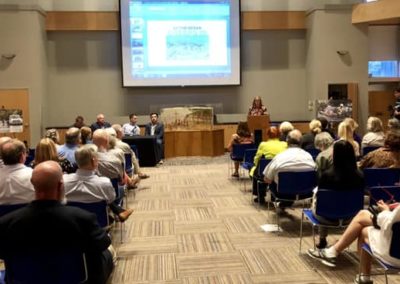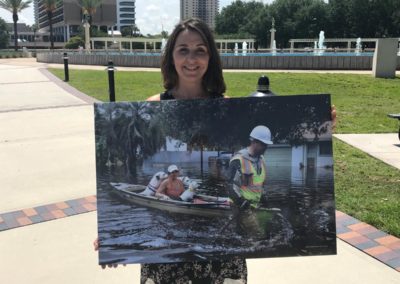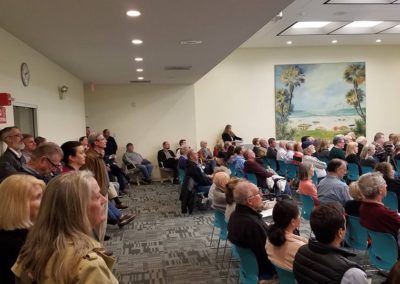River Uprising
The Lower St. Johns River resembles the Atlantic Ocean more than at any other time in its past: The currents are faster, the water is saltier and the tidal range can be more extreme.
The combined impacts from decades of dredging, sea level rise, and outdated infrastructure demand that we take action immediately to protect our river and our communities.
We need solutions.
Join St. Johns Riverkeeper staff as we discuss solutions to climate change and increasing water levels in the St. Johns with experts in the field. From parks to solar energy, we’ll talk about solutions across the board!
Background
The Lower St. Johns River resembles the Atlantic Ocean more than at any other time in its past: The currents are faster, the water is saltier and the tidal range can be more extreme. Hurricane Irma demonstrated that a Category 1 storm can cause a shocking 150-year flood, sending salty seawater gushing into the streets and neighborhoods of Jacksonville due to decisions made in the past and the failure to invest in resiliency and mitigation strategies today. The combined impacts from decades of dredging, sea level rise, and outdated infrastructure demand that we take action immediately to protect our river and our communities.
As the Ocean Creeps In, a Special Report written by reporters Nate Monroe and Christopher Hong of the Florida Times-Union, was published in May 2018. This investigative report underscored how historic straightening, channelizing and dredging have impacted the St. Johns River. Based on these findings and ongoing concerns, St. Johns RIVERKEEPER enacted a series of River Rising Town Halls in 2018. These events were designed as a way to inform local citizens about rising waters and continue a dialogue about the flooding that threatens our economy, the river, our homes, businesses, recreation, and health.
It is critical that have a community conversation about these issues and act now. Otherwise, we will become even more vulnerable as waters continue to rise, flooding becomes more frequent, public infrastructure fails, and our river is further degraded by more sewage and pollution. – Lisa Rinaman, your St. Johns Riverkeeper.
Here are just some of the findings the Florida Times-Union Special Report highlighted:
- The tidal range — the difference between high tide and low tide — has increased over many decades, based on dredging, straightening and channelizing.
- When a river is dredged to a uniform depth, the natural features that can suck energy out of incoming waves — underwater sand dunes, rocks, grass beds — are eliminated. That makes it more like a smooth road with less resistance, allowing storm surges to impact areas further upriver.
- Greater depth can also explain why saltwater moves farther inland. In a deep river, heavier saltwater on the bottom mixes less with the fresh top layer, meaning there is less resistance to bottom-layer saltwater as it moves inland.
- The latest 7-foot dredging project could increase water levels in a 100-year storm surge by 3 to 6 inches in the main stem of the river, and by 8 inches in areas closer to the ocean.
It was only a matter of inches that saved some neighbors from thousands of dollars in damage while causing others to flood. Locally, the Northeast Florida Regional Council has recommended that we plan for rising waters of 1’ – 3’ by 2060 and 3’ – 6’ by 2110.
River Rising Town Halls
Hurricane Irma flooded homes and businesses, caused severe damage to public infrastructure, and left a toxic soup of sewage, chemicals, and debris in its wake. Despite the wakeup call, most elected leaders were doing very little following the storm to make our communities less vulnerable in the future.
ST. JOHNS RIVERKEEPER responded with a series of town hall meetings to raise awareness about the impacts of dredging and rising waters, spark dialogue about what we need to do to become more resilient, and encourage our leaders to act. Audiences overwhelmingly expressed concerns about the impacts of dredging and rising water levels in the St. Johns and the lack of action by elected officials.
Here is our direct action impact from the River Rising Town Halls:
- More than 900 people attended our nine Town Halls.
- Over 1,000 postcards were mailed to City leaders asking them to take action now to protect again the next big storm.
- Over 900 petition signatures were made asking the City of Jacksonville to demand more mitigation if the St. Johns River deep dredge is to move forward.
This initiative was intended to raise awareness about the impacts of climate change and dredging and encourage Jacksonville elected leaders to conduct a Vulnerability Assessment for the City and hire a Chief Resiliency Officer. We successfully accomplished all three objectives.
However, this work has just begun. St. Johns RIVERKEEPER continues to advocate for solutions to address the causes and impacts of climate change by reducing Greenhouse Gas (GHG) and implementing strategies to create more resilient communities throughout the watershed.
